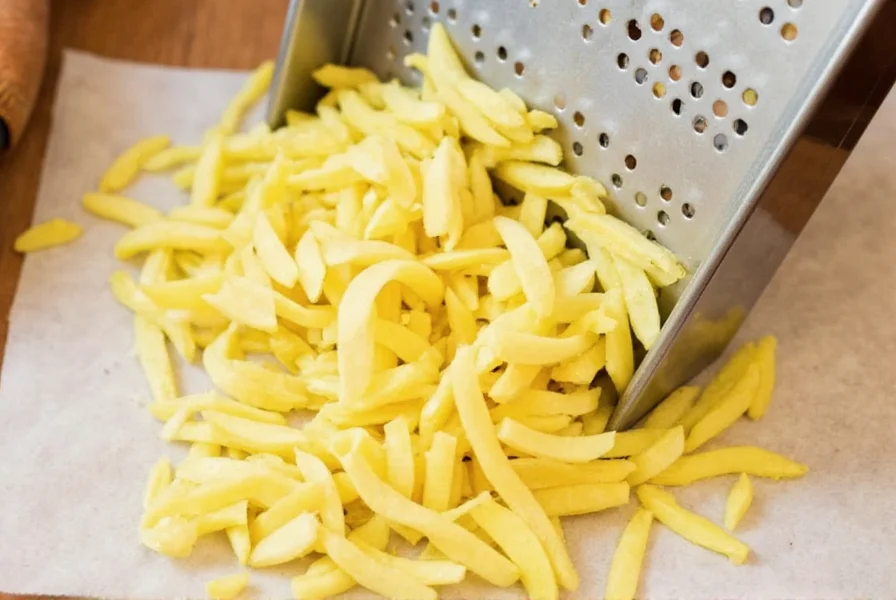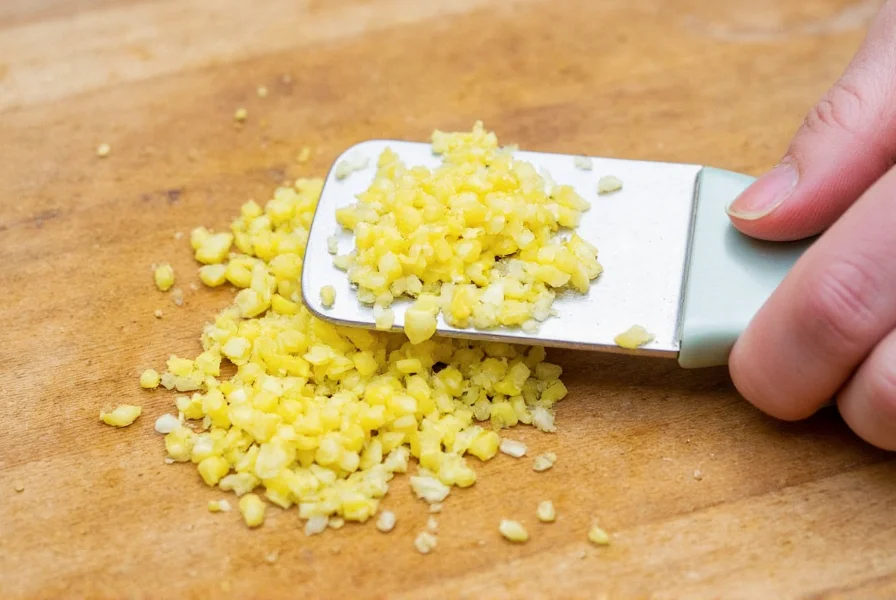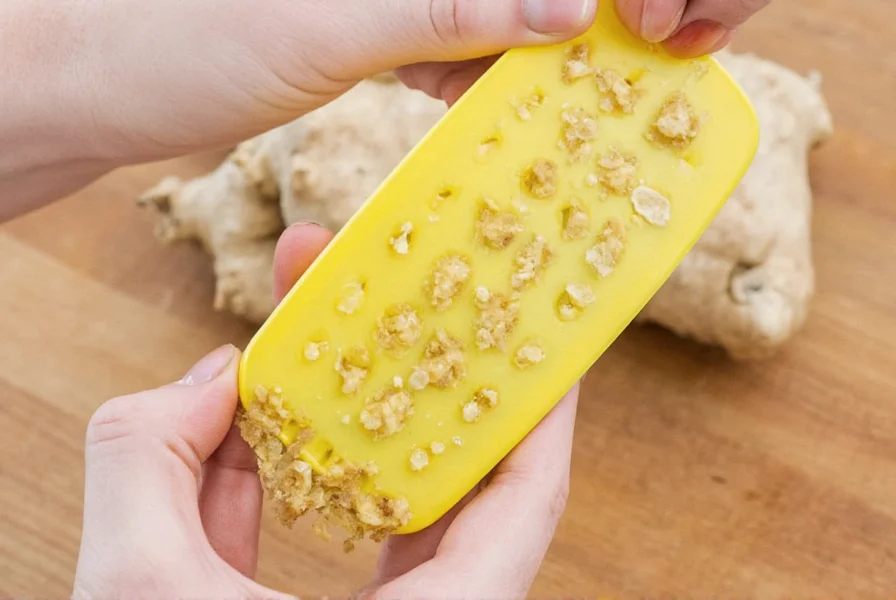Grating ginger properly transforms this pungent root into a versatile ingredient that distributes evenly throughout dishes. Whether you're preparing Asian cuisine, baking, or making fresh juices, mastering ginger grating techniques significantly impacts flavor distribution and overall dish quality.
Essential Tools for Grating Ginger
While several kitchen tools can handle ginger, each produces different results:
| Tool | Texture Produced | Best For | Efficiency Rating |
|---|---|---|---|
| Microplane grater | Fine, fluffy shreds | Sauces, dressings, marinades | ★★★★★ |
| Box grater (fine side) | Medium shreds | Stir-fries, baked goods | ★★★★☆ |
| Zester | Very fine pulp | Cocktails, delicate sauces | ★★★☆☆ |
| Food processor | Coarse, wet pulp | Large batch cooking | ★★★☆☆ |
Professional chefs consistently recommend microplane graters for ginger preparation. The sharp stainless steel blades create minimal waste while maximizing surface area for optimal flavor release. Unlike traditional box graters that can crush ginger fibers, microplanes preserve the essential oils that give ginger its distinctive aroma and heat.

Step-by-Step Ginger Grating Technique
Follow these professional techniques to achieve perfect results every time:
- Peel properly - Use the edge of a spoon to gently scrape off ginger skin. This method removes only the thin outer layer while preserving maximum flesh.
- Chill the ginger - Refrigerate for 15-20 minutes before grating. Cold ginger firms up the fibers, making them easier to grate without becoming mushy.
- Position correctly - Hold the grater at a 45-degree angle over your preparation surface. This angle prevents pulp buildup and reduces hand fatigue.
- Apply consistent pressure - Use firm, downward strokes in one direction only. Back-and-forth motion creates uneven texture and wastes precious ginger.
- Rotate as needed - Turn the ginger root periodically to access all sides and minimize waste.
Maximizing Flavor and Minimizing Waste
Many home cooks waste up to 30% of their ginger during preparation. These professional tips help you extract maximum value:
- Save the ginger peel for making tea or broth - simply simmer in water for 15 minutes
- Place a small bowl under your grater to catch essential oils that would otherwise drip away
- For stubborn remaining pieces, add a teaspoon of water and continue grating to extract every bit
- Store leftover ginger root in a sealed container with a paper towel to absorb moisture
Proper Storage of Grated Ginger
Freshly grated ginger loses potency quickly. For best results:
- Refrigerate in an airtight container for up to 5 days
- Freeze in ice cube trays with a bit of water for longer storage (up to 6 months)
- Preserve in vinegar or sherry for culinary applications requiring tang
- Never store grated ginger at room temperature for more than 2 hours

Common Ginger Grating Mistakes to Avoid
Even experienced cooks make these critical errors when grating ginger:
- Using a dull grater - Dull blades crush rather than grate, releasing bitter compounds
- Grating too aggressively - Excessive pressure creates heat that degrades delicate flavor compounds
- Skipping the peeling step - Skin contains dirt and has a different texture that affects final dish
- Using wet ginger - Moisture makes ginger slippery and difficult to control
Creative Uses for Freshly Grated Ginger
Beyond standard applications, try these professional chef techniques:
- Mix with honey for an immunity-boosting syrup
- Add to smoothies for digestive benefits without overpowering flavor
- Create ginger-infused oil by steeping in warm carrier oil
- Combine with lemon zest for a flavor boost in baked goods
- Use in facial scrubs for natural exfoliation (diluted properly)
Frequently Asked Questions
Can you grate ginger without peeling it first?
Yes, you can grate unpeeled ginger, but this introduces dirt and potentially bitter flavors from the skin. The skin also has a different texture that may affect your final dish. For most culinary applications, peeling with a spoon provides the best balance of flavor and minimal waste.
How much grated ginger equals one tablespoon of fresh ginger?
One tablespoon of freshly grated ginger equals approximately 15 grams or 0.5 ounces by weight. When measuring by volume, pack the grated ginger lightly into the measuring spoon without pressing down. This measurement applies to ginger grated using a microplane for consistent texture.
Why does my grated ginger turn mushy?
Ginger becomes mushy when you apply too much pressure while grating or use a dull grater. The heat from excessive friction breaks down the fibers. To prevent this, chill the ginger first, use light consistent pressure, and ensure your grater has sharp blades. Microplane graters typically produce the best texture with minimal mushiness.
What's the difference between grated and minced ginger?
Grated ginger creates fine, fluffy shreds that distribute evenly and release flavor quickly, while minced ginger consists of small chopped pieces that provide more texture and slower flavor release. Grated ginger works best for sauces and dressings where even distribution matters, while minced ginger suits stir-fries where you want distinct ginger pieces.
How can I prevent ginger stains on my hands and cutting board?
To prevent staining, wear food-safe gloves while handling ginger or rub your hands with lemon juice before and after preparation. For cutting boards, use a dedicated board for strong-flavored ingredients or immediately clean with baking soda and vinegar after use. Stainless steel surfaces resist staining better than wood or plastic.











 浙公网安备
33010002000092号
浙公网安备
33010002000092号 浙B2-20120091-4
浙B2-20120091-4